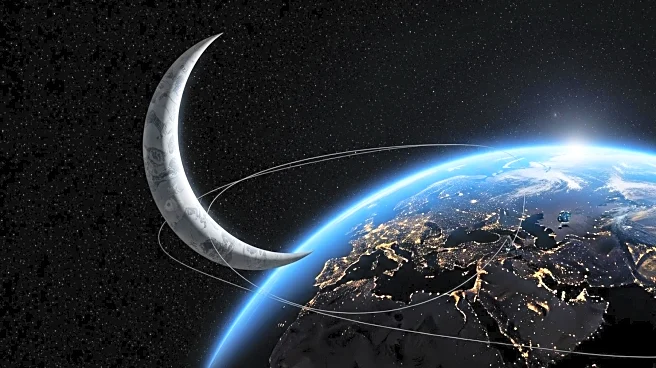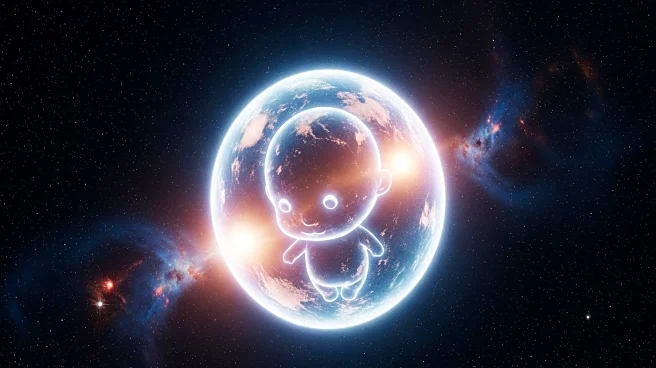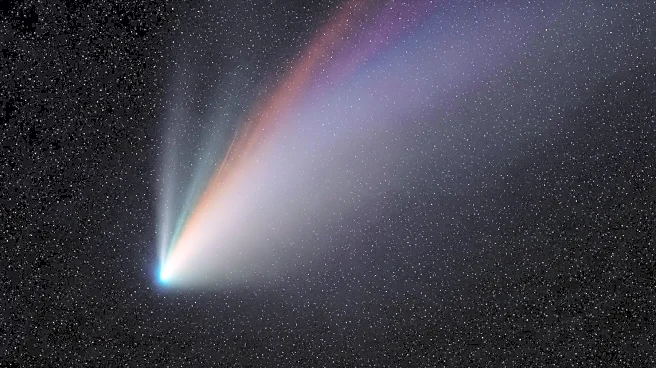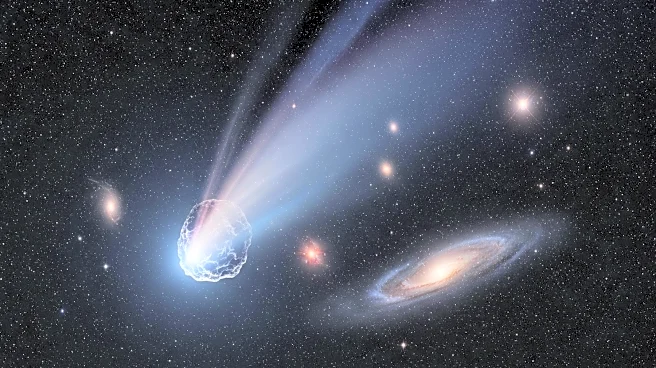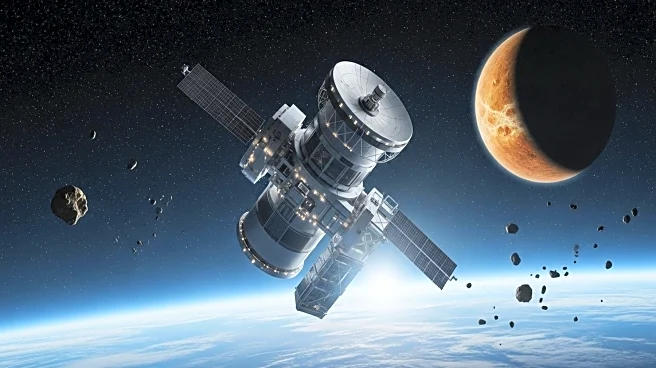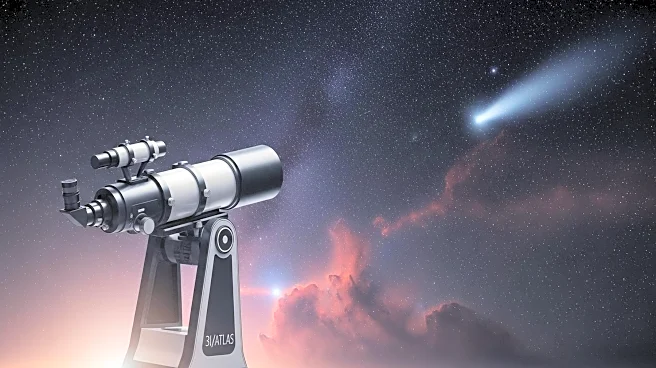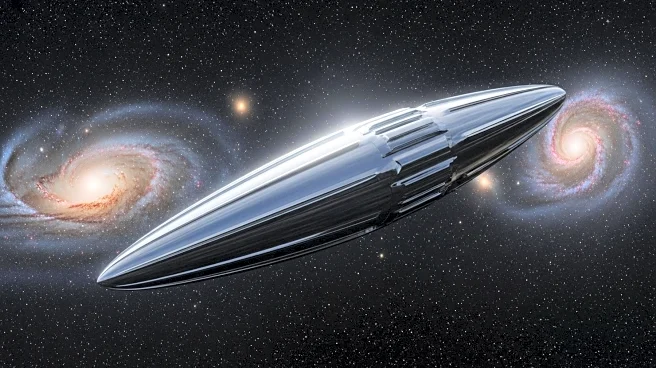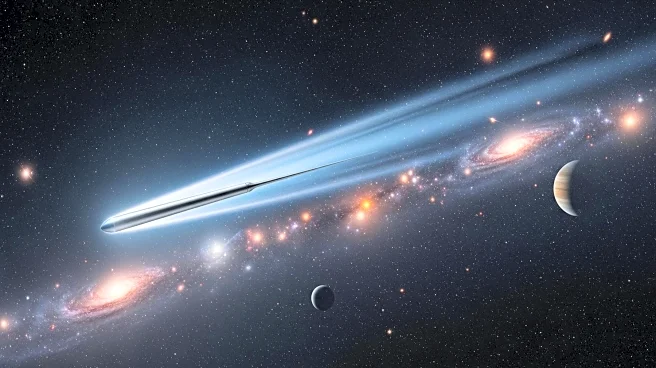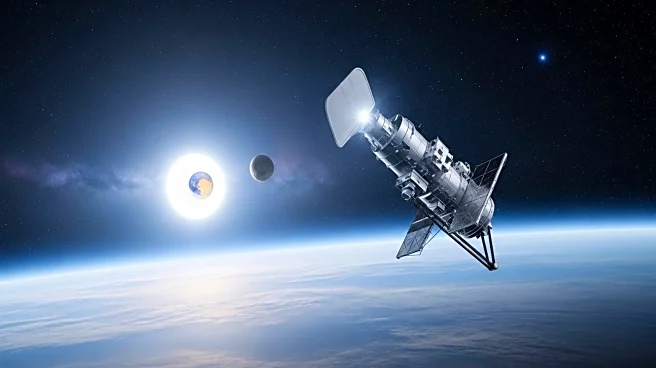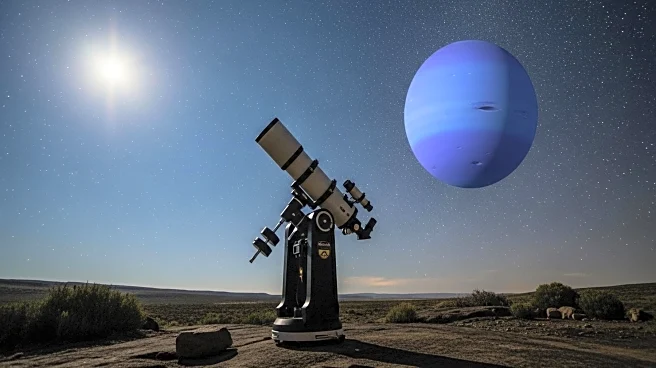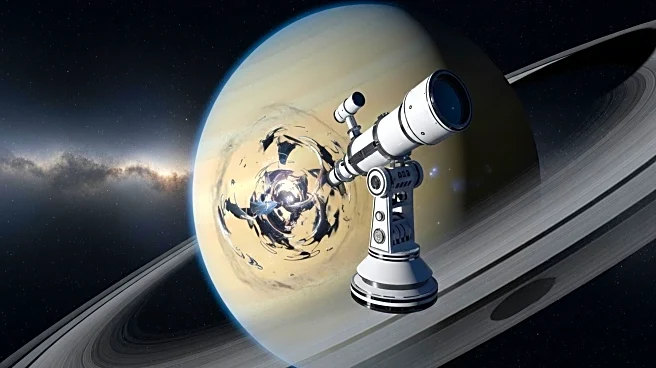What is the story about?
What's Happening?
A recent study published in Scientific Reports proposes a new theory regarding the age and formation of Jupiter, the largest planet in our solar system. Traditionally believed to be around 4.5 billion years old, the study suggests a more complex formation process involving chondrules—tiny, once-molten droplets found in meteorites. Researchers from Nagoya University and the Italian National Institute for Astrophysics propose that Jupiter's rapid growth caused high-velocity collisions among planetesimals, leading to the formation of chondrules. This aligns with meteorite chronometry, suggesting Jupiter formed about 4.6 million years ago.
Why It's Important?
This new theory provides a fresh perspective on planetary formation, challenging traditional models that rely on isotope dating and mass accumulation. By linking chondrules to Jupiter's growth, the study offers a novel method for dating planetary bodies, potentially refining timelines for other planets like Saturn and Earth. Understanding Jupiter's formation is crucial, as its massive size and gravitational influence have shaped the orbits and evolution of neighboring planets. The findings could lead to a deeper understanding of the dynamic processes that shaped our early solar system.
Beyond the Headlines
The study's approach of using chondrules as timestamps for planetary growth bridges small-scale evidence with large-scale planetary history. This method could revolutionize how scientists reconstruct the early evolution of planets, both in our solar system and beyond. By connecting meteorite chemistry to planetary dynamics, the research opens new avenues for exploring the formation of cosmic giants and their influence on surrounding celestial bodies. The study highlights the potential for interdisciplinary research to advance our understanding of the universe.
AI Generated Content
Do you find this article useful?


